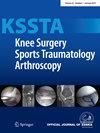Routine 2D MRI identifies the anterior talofibular ligament fascicles and lateral fibulotalocalcaneal ligament complex with moderate to substantial interobserver reliability
Abstract
Purpose
The anterior talofibular ligament (ATFL) consists of two fascicles, with the intra-articular superior fascicle and extra-articular inferior fascicle connected to the calcaneofibular ligament (CFL) via the arciform fibres, forming the lateral fibulotalocalcaneal ligament (LFTCL) complex. Accurate identification of which fascicles have been injured is useful for determining the optimal treatment of patients with lateral ligament injuries. There is a lack of imaging studies demonstrating the distinctive anatomy of these important structures on magnetic resonance imaging (MRI). Hence, the aim of this pilot study is to investigate interobserver reliability in identifying the fascicles of the ATFL and LFTCL complex on routine two-dimensional (2D) MRI scans.
Methods
This is a single-centre review of 100 consecutive routine 2D MRI ankles performed in our institution for reasons other than ankle sprain. The ATFL fascicles and LFTCL complex were independently reviewed by three clinicians, and interobserver reliability was analysed using Fleiss kappa.
Results
There were 46 males, and the average age was 47.7 years. In terms of the interobserver reliability, there was a substantial level of agreement in determining the number of fascicles for the ATFL (k = 0.688, p < 0.001, 95% confidence interval [CI]: 0.575–0.801) which was similar to the CFL (k = 0.747, p < 0.001, 95% CI: 0.633–0.860) while the arciform fibres had a moderate level of agreement (k = 0.489, p < 0.001, 95% CI: 0.377–0.603). There were 54 MRI scans with bifascicular ATFL, while the rest had a single inferior ATFL fascicle. The LFTCL complex was identified in 99 scans. No differences were noted in age, gender or MRI strength in the ability to visualize these structures on routine 2D MRI scans.
Conclusion
Routine 2D MRI can reliably identify the fascicles of the ATFL and LFTCL complex with moderate to substantial levels of agreement. This can help clinicians enhance their diagnostic accuracy and refine treatment strategies without relying on complex or costly imaging techniques.
Level of Evidence
Level III.

 求助内容:
求助内容: 应助结果提醒方式:
应助结果提醒方式:


